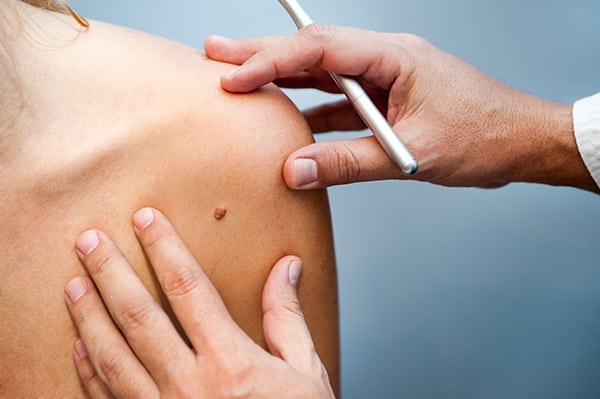Your skin is your body’s largest organ, and also the first line of defense against infection. That’s why it’s so important to take care of it, says Lindsay McCarthy, a dermatological nurse practitioner at Associated Dermatology and Skin Care Clinic of Helena.
Because your skin covers your body, it’s subjected to constant physical battering from the elements and all the daily wear and tear a body endures. Chief among those irritants is exposure to the sun’s rays, a reason your skin needs constant attention to ensure that it’s healthy.
Skin can be affected by several types of cancers, with melanoma being the deadliest. Fortunately, we can see skin cancers. Ninety-two percent of people with melanoma survive at least five years, mostly because of early detection.
Keep an eye out for these seven warning signs that need to be checked out by a dermatologist.
- ABCDE
Many people have spots, like moles and freckles, on their skin all the time. But to be alert for something potentially cancerous, know your ABCDEs:
- Asymmetry: Ordinary freckles and moles are pretty round or ovular. A spot that looks more like an amoeba is a sign that the spot might be cancerous.
- Border: The borders of most naturally occurring skin spots are smooth. If you see a spot with a ragged border, take heed.
- Color: Ordinary skin spots are one color. A patchy-colored spot is a warning sign.
- Diameter: Those freckles and moles should be no larger than the size of a pencil eraser. Have any spot larger than that checked out.
- Evolving: Cancers grow, change in color, and become raised. An evolving growth is a concern.
- An Ugly Duckling
Gut instinct about your own skin is often a good barometer. Dermatologists recommend that any growth, spot or lesion that just looks different from all the others should be examined.
- Persistent Open Sores
Sores that don’t heal, or that heal and then open again, can be a sign of a non-melanoma skin cancer, like squamous cell carcinoma. While not as deadly as melanoma, it still warrants attention.
- Persistent Itchy Patches
Most itchy patches are more annoying than dangerous, but those that resist efforts to tame them can be skin cancer. In either case, if you can’t eliminate the rash, see your dermatologist.
- Persistent Nodules
A patch of shiny bumps, or growths that look like warts, and are resistant to treatment, could be cancerous.
- Pink Splotches
As with itchy patches, pink splotches are typically not cancerous. Pink splotches with elevated borders, though, are another story.
- Scars Without Injuries
A cut or abrasion in skin can cause a scar when healing. But a stretch of skin that appears to be scarring for no reason may be a growth of basal cell carcinoma.
We need to be constantly vigilant about the health of our skin. Any new moles or growths, and any existing growths that begin to increase in size or change significantly, should raise alarms. An annual dermatological checkup can catch a lot of these issues, says McCarthy. But if you notice rapid changes in your skin, see your dermatologist immediately.
The doctors, nurses and other skin care providers at Associated Dermatology and Skin Care of Helena are always attuned to changes in their patients’ skin. To make an appointment, call (408) 442-3534 or visit AssociatedDermHelena.com.
Our Location
ASSOCIATED DERMATOLOGY & SKIN CANCER CLINIC OF HELENA
50 S LAST CHANCE GULCH ST
HELENA, MT 59601
406-442-3534
WWW.ASSOCIATEDDERMHELENA.COM
MONDAY-FRIDAY 8:00A-5:00P
*About Sponsored Content
KXLH offers useful, valuable information from select sponsors on these pages. This content is not produced or endorsed by KXLH News. To learn more about being a Sponsored Content provider on this site, contact our digital sales specialists.








